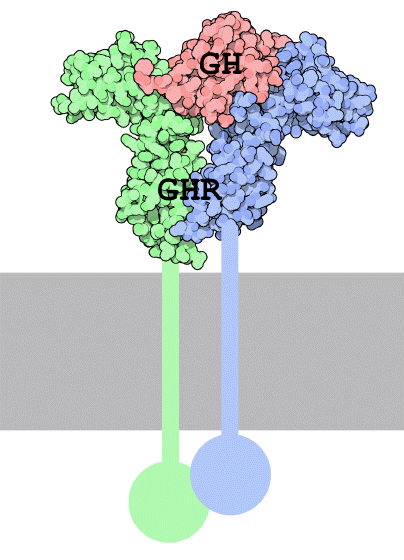Full Length over Exon Deficient
November 14, 2015
The growth hormone receptor is embedded in the outer membrane of the cell. It has three major parts:
1. An extracellular region that sticks out from the surface of the cell.
2. A transmembrane region that anchors the receptor to the cell membrane.
3. An intracellular region that transmits signals to the interior of the cell.
The extracellular region attaches to growth hormone, fitting together like a lock and its key. When joined this triggers signaling via the intracellular region of the receptor that stimulates the growth and division of cells. This signaling also leads to the production, in the liver and the anterior pituitary, of another important growth-promoting hormone called insulin-like growth factor I (IGF-I). Growth hormone and IGF-I have a wide variety of effects on the growth and function of many parts of the body and also influence metabolism, including how the body uses and stores carbohydrates, proteins, and fats from food. Researchers have identified two major versions (isoforms) of the growth hormone receptor. The two isoforms differ by the presence or absence of a particular segment known as exon 3, which is located in the extracellular region of the receptor. The version of the receptor that includes exon 3 is known as the full-length isoform (fl-GHR), while the version that is missing exon 3 is known as the exon 3-deficient isoform (d3-GHR). Both isoforms are relatively common in most populations. Each individual can have fl-GHR only, d3-GHR only, or a mix of both isoforms. Both bind to GH in the same way on the surface of cells, but for reasons that remain as of yet unclear, d3-GHR is associated with enhanced signaling within cells compared with fl-GHR.
In regards to GHR, full length is to be preferred as it stimulates less than full length in the human body.